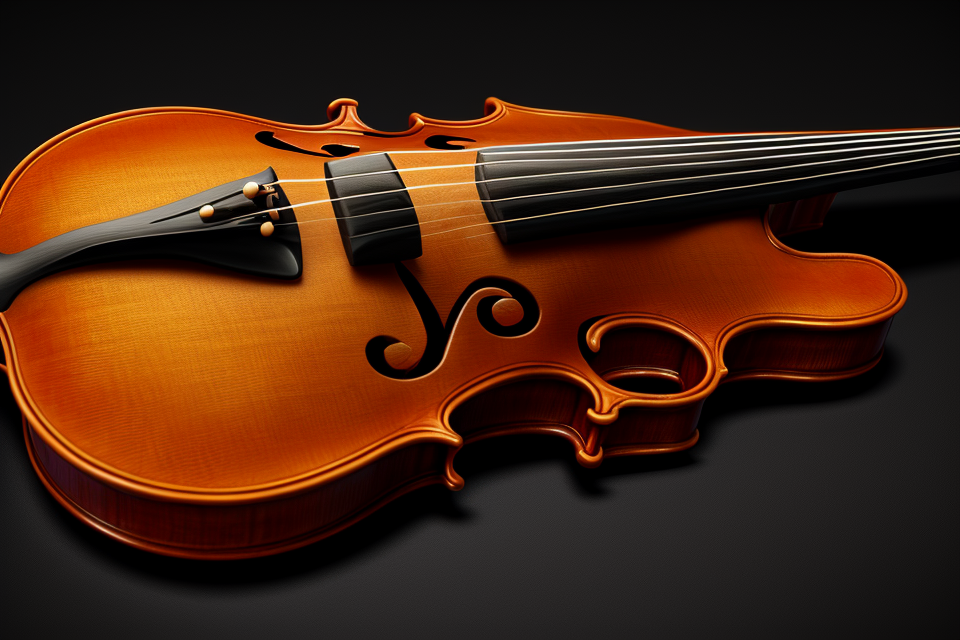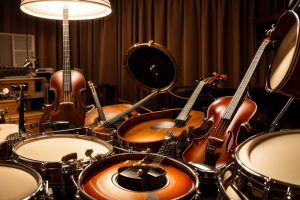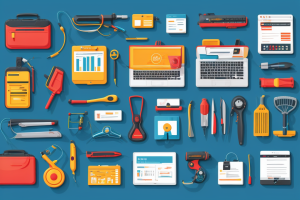
Instruments, such as musical instruments or scientific equipment, are often crucial tools for professionals in various fields. However, the question remains, are these instruments considered depreciable assets? This comprehensive guide will explore the concept of instrument repairs and tax deductions, and help you determine whether your instrument is eligible for depreciation. So, whether you’re a musician, scientist, or simply curious, read on to find out more about the tax benefits of instrument ownership.
Understanding Depreciable Assets
What are Depreciable Assets?
Depreciable assets are property, plant, and equipment that a business uses to generate income. These assets lose value over time due to wear and tear, obsolescence, or other factors. The decrease in value is called depreciation.
Depreciable assets are an essential part of a business’s balance sheet. They are listed as non-current assets, and their value is subject to amortization or depreciation. The process of depreciation allocates the cost of the asset over its useful life. This helps businesses to spread the cost of the asset over time and recognize revenue from the asset.
Depreciable assets are subject to tax laws and accounting rules. These rules govern how businesses can claim depreciation as a tax deduction. Different types of assets have different depreciation schedules and methods. For example, buildings and equipment have different depreciation periods and rates.
It is important for businesses to properly account for depreciable assets. Failure to do so can result in incorrect financial statements and tax liabilities. Therefore, businesses should work with qualified accountants and tax professionals to ensure that they are correctly accounting for their depreciable assets.
Examples of Depreciable Assets
In accounting, a depreciable asset is a property that loses value over time due to wear and tear, obsolescence, or other factors. The decrease in value of the asset is referred to as depreciation. In general, any tangible property that is expected to have a useful life of more than one year can be considered a depreciable asset.
Examples of depreciable assets include:
- Machinery and equipment
- Buildings and structures
- Furniture and fixtures
- Vehicles
- Computers and software
- Musical instruments
It is important to note that intangible assets, such as patents and trademarks, are not considered depreciable assets. Additionally, land is not typically considered a depreciable asset, as its value is generally considered to remain constant over time.
Importance of Depreciable Assets in Accounting
Depreciable assets are crucial components of a company’s balance sheet, representing long-term investments that provide benefits over time. In accounting, these assets are vital for several reasons:
- Financial reporting: Depreciable assets contribute to a company’s net worth, influencing its financial statements. By reporting the value of these assets, stakeholders can gain insight into the company’s financial health and performance.
- Tax planning: Depreciation is a tax-deductible expense, allowing companies to reduce their taxable income. Properly accounting for depreciable assets is essential for optimizing tax liabilities and minimizing expenses.
- Investment decision-making: The valuation of depreciable assets helps inform investment decisions. Understanding the value of these assets, along with their depreciation rates, assists in determining the overall worth of a company and making informed investment choices.
- Capital budgeting: Depreciable assets represent long-term investments that require significant financial resources. Properly accounting for these assets is essential for effective capital budgeting, enabling companies to make informed decisions about future investments and resource allocation.
- Asset management: Accurate tracking of depreciable assets is crucial for effective asset management. By keeping accurate records of these assets, companies can optimize their use, extend their lifespan, and make informed decisions about maintenance and replacement.
Overall, the accurate accounting and management of depreciable assets are essential for effective financial reporting, tax planning, investment decision-making, capital budgeting, and asset management.
Instruments as Depreciable Assets
Definition of Instruments
In accounting and tax law, an instrument is defined as a legal document that serves as evidence of a financial transaction. It is a written promise to pay a specified amount of money to a specific individual or entity. In the context of depreciable assets, an instrument refers to any tangible property that can be depreciated over time due to wear and tear, obsolescence, or other factors.
Instruments can take many forms, including cash, checks, promissory notes, bonds, and securities. They can also be physical objects, such as musical instruments, machinery, or equipment. In general, any asset that has a useful life of more than one year and can be depreciated over time is considered an instrument for tax purposes.
However, it is important to note that not all instruments are created equal when it comes to depreciation. Different types of instruments may have different depreciation schedules, methods, and limitations. For example, residential rental property is depreciated over 27.5 years, while commercial real estate is depreciated over 39 years. Similarly, different types of machinery and equipment may have different depreciation periods and methods, depending on their intended use and the tax code.
Understanding the definition of instruments is crucial for businesses and individuals who own depreciable assets. By accurately determining which assets qualify as instruments, taxpayers can claim the appropriate depreciation deductions and maximize their tax savings. In the next section, we will explore the rules and regulations surrounding instrument depreciation and tax deductions.
Criteria for an Instrument to be Considered a Depreciable Asset
An instrument is considered a depreciable asset if it meets the following criteria:
- It has a determinable useful life
- It is expected to decline in value over time
- It is used in the production of income or is intended to be held for the production of income
- It is not intended for resale in the near future
In other words, an instrument must have a predictable lifespan and be expected to lose value over time in order to be considered a depreciable asset. Additionally, the instrument must be used for the purpose of generating income, rather than being held for personal use or as an investment. Finally, if the instrument is intended to be sold in the near future, it is not considered a depreciable asset.
Advantages of Treating Instruments as Depreciable Assets
Improved Cash Flow Management
One of the key advantages of treating instruments as depreciable assets is improved cash flow management. By spreading the cost of the instrument over its useful life, businesses can more effectively manage their cash flow, ensuring that they have the necessary funds available to cover operating expenses, pay taxes, and invest in growth opportunities. This approach also helps businesses avoid large, unexpected expenses that can disrupt their cash flow and potentially lead to financial difficulties.
Enhanced Tax Benefits
Another significant advantage of treating instruments as depreciable assets is enhanced tax benefits. By depreciating the cost of the instrument over time, businesses can deduct a portion of the cost from their taxable income, thereby reducing their tax liability. This can provide significant financial benefits, particularly for businesses that rely heavily on musical instruments as part of their operations. Additionally, depreciation can help businesses to maintain a more accurate financial picture, making it easier to identify and take advantage of other tax-saving opportunities.
Increased Accuracy in Financial Reporting
Finally, treating instruments as depreciable assets can also increase accuracy in financial reporting. By accurately depreciating the cost of the instrument over time, businesses can more accurately reflect the true value of the asset on their balance sheet. This can help businesses to make more informed financial decisions, as well as provide a more accurate picture of their financial health to investors and other stakeholders. Additionally, accurate financial reporting can help businesses to identify and address any potential issues related to the instrument, ensuring that it continues to meet their needs and remain a valuable asset.
Instrument Repairs and Tax Deductions
Repairs vs. Improvements
When it comes to instrument repairs and tax deductions, it is important to understand the difference between repairs and improvements.
Repairs are defined as the restoration of an instrument to its original condition due to wear and tear or damage. Examples of repairs include fixing a cracked key or replacing a worn-out string. Repairs are typically necessary to keep the instrument in good working condition and are not considered a capital improvement.
On the other hand, improvements are defined as the enhancement of an instrument’s functionality or condition beyond its original state. Examples of improvements include adding a new feature or increasing the size of an instrument. Improvements are typically made to increase the value of the instrument and are considered a capital improvement.
It is important to note that tax treatment for repairs and improvements varies. Repairs are typically deducted in the year they are incurred, while improvements are capitalized and depreciated over time. It is essential to consult with a tax professional to determine the appropriate tax treatment for each repair or improvement made to an instrument.
Deducting Repair Expenses
When it comes to deducting repair expenses for musical instruments, there are specific rules and guidelines that taxpayers should be aware of. In general, taxpayers can deduct repair expenses if they are incurred to keep the instrument in good working condition and are not for improvements or additions that would extend the instrument’s life.
To be eligible for a tax deduction, repair expenses must meet the following criteria:
- The expense must be for the repair or maintenance of the instrument, and not for improvements or additions.
- The expense must be reasonable and necessary to keep the instrument in good working condition.
- The expense must be incurred during the tax year in which the deduction is being claimed.
Some examples of deductible repair expenses include:
- Replacing broken strings or keys
- Realigning the instrument’s action
- Replacing a cracked or broken woodwind or brass instrument mouthpiece
- Replacing a broken or worn-out bow for a stringed instrument
It’s important to note that if the repair expenses exceed the adjusted basis of the instrument, the excess cannot be deducted in the current year. Instead, the excess must be carried forward and added to the adjusted basis of the instrument in future years.
Additionally, if the repair expenses are incurred as a result of normal wear and tear, they may not be deductible. For example, if the keys on a piano become worn and need to be replaced, the cost of the replacement may not be deductible because it is considered a normal part of the instrument’s aging process.
It’s recommended that taxpayers keep detailed records of all repair expenses, including receipts and invoices, to support their deductions in case of an audit.
Overall, understanding the rules and guidelines for deducting repair expenses for musical instruments can help taxpayers maximize their deductions and keep their instruments in good working condition.
Capitalizing Improvement Expenses
When it comes to instrument repairs and tax deductions, one important aspect to consider is capitalizing improvement expenses. This refers to the costs incurred for the betterment or extension of the life of the instrument.
There are specific rules and guidelines that must be followed when it comes to capitalizing improvement expenses. One of the key rules is that the expense must be directly related to the instrument and must be necessary for the instrument to continue to function properly. Additionally, the expense must be reasonable in nature and must not exceed the benefits it provides.
Here are some examples of capitalizing improvement expenses:
- Upgrading the instrument’s software or hardware to improve its functionality or to extend its lifespan.
- Replacing obsolete parts with newer, more efficient parts to improve the instrument’s performance.
- Improving the instrument’s security features to protect it from cyber threats or other forms of attack.
It’s important to note that not all repairs or maintenance costs can be capitalized as improvement expenses. For example, routine maintenance costs such as cleaning, lubricating, or replacing worn parts cannot be capitalized as improvement expenses.
To ensure that you are properly capitalizing improvement expenses, it’s important to consult with a tax professional or accountant who is familiar with the rules and guidelines related to instrument repairs and tax deductions. They can help you determine which expenses are eligible for capitalization and can guide you through the process of claiming these expenses on your tax return.
Tax Benefits of Depreciating Instruments
Depreciating an instrument can provide significant tax benefits for musicians and music-related businesses. Depreciation is the reduction in value of an asset over time due to wear and tear, obsolescence, or other factors. In the context of musical instruments, depreciation is typically calculated based on the instrument’s useful life, which is often determined by the manufacturer or the IRS.
Here are some key points to consider when it comes to the tax benefits of depreciating instruments:
- Tax Deductions: Depreciating an instrument can allow you to claim a tax deduction for the decline in value of the instrument over time. This can help to offset the cost of repairs, maintenance, and other expenses related to the instrument.
- Business Use: If you use your instrument for business purposes, such as performing, teaching, or selling instruments, you may be able to claim a higher depreciation rate, which can result in greater tax savings.
- IRS Guidelines: The IRS has specific guidelines for determining the useful life of musical instruments and the rate at which they can be depreciated. For example, the useful life of a violin is typically 10 years, while the useful life of a guitar is 7 years.
- Professional Appraisal: To claim a tax deduction for the depreciation of your instrument, you will need to have it appraised by a professional appraiser. The appraiser will determine the instrument’s fair market value and its useful life, which will be used to calculate the depreciation rate.
- Record Keeping: It is important to keep detailed records of your instrument’s maintenance and repairs, as well as any related expenses, in order to support your tax deduction claims. This can include receipts for repairs, maintenance, and upgrades, as well as documentation of the instrument’s value and condition over time.
Overall, depreciating an instrument can provide significant tax benefits for musicians and music-related businesses. By understanding the rules and guidelines for depreciating instruments, you can maximize your tax savings and ensure that you are in compliance with IRS regulations.
Planning for Tax Deductions
Keeping Records of Instrument Repairs
The Importance of Keeping Records
As a musician, it is crucial to keep accurate records of instrument repairs. This not only helps to maintain the instrument’s value but also provides documentation for potential tax deductions. Proper record-keeping can help musicians maximize their tax savings and ensure compliance with tax regulations.
Documenting Repairs
To qualify for tax deductions, musicians must document all instrument repairs. This includes keeping receipts and invoices from repair shops, as well as records of any work done by independent repairers. Musicians should also keep detailed notes of the work done on their instruments, including the date of the repair, the nature of the repair, and the cost.
Tracking Depreciation
Instruments are considered depreciable assets, meaning that their value decreases over time. Musicians must track the depreciation of their instruments to determine their value for tax purposes. This can be done by keeping records of the instrument’s purchase price, any improvements or upgrades, and the total number of years the instrument has been in use.
Deducting Repair Costs
Musicians can deduct the cost of instrument repairs from their taxable income. To do so, they must provide documentation of the repairs, including receipts and invoices. The repairs must also be necessary to maintain the instrument’s value and functionality. Musicians should consult with a tax professional to determine the maximum amount they can deduct from their taxable income.
Staying Organized
Keeping accurate records of instrument repairs can be time-consuming, but it is essential for maximizing tax deductions. Musicians should keep all records in a designated folder or binder, and they should update the records regularly. They should also keep a copy of their records in a safe and secure location, such as a bank safe deposit box or a cloud-based storage service.
In summary, keeping accurate records of instrument repairs is crucial for musicians who want to maximize their tax deductions. Musicians should document all repairs, track depreciation, and consult with a tax professional to ensure compliance with tax regulations. By staying organized and maintaining detailed records, musicians can ensure that they are taking full advantage of their tax savings.
Consulting with a Tax Professional
When it comes to claiming tax deductions for instrument repairs, it is important to consult with a tax professional. A tax professional has the knowledge and experience to help you navigate the complex tax laws and regulations that apply to musical instruments. They can provide guidance on what expenses are deductible, what records you need to keep, and how to properly report your deductions on your tax return.
A tax professional can also help you determine the depreciable value of your instrument, which is an important factor in calculating your tax deductions. Depreciation is the reduction in value of an asset over time, and it is calculated based on the asset’s expected useful life and the method of depreciation chosen by the taxpayer.
In addition to providing guidance on tax deductions, a tax professional can also help you with other aspects of your tax return, such as reporting income from performances or other sources, claiming credits and deductions, and filing extensions if needed.
It is important to note that not all tax professionals are familiar with the specific tax rules and regulations that apply to musical instruments, so it is important to find one who has experience in this area. You can ask for referrals from other musicians or music industry professionals, or search online for tax professionals who specialize in the music industry.
Overall, consulting with a tax professional is an essential step in maximizing your tax deductions for instrument repairs and ensuring that you are in compliance with all applicable tax laws and regulations.
Other Tax Considerations for Musicians
Musicians, like other self-employed individuals, must also consider other tax deductions beyond instrument repairs. Here are some other tax considerations for musicians:
Travel Expenses
Musicians who travel for work may be able to deduct travel expenses, including transportation, lodging, and meals. To qualify for a travel deduction, the trip must be primarily for business purposes.
Home Office Expenses
Musicians who have a dedicated home office space used exclusively for business purposes may be able to deduct a portion of their home expenses, including rent, utilities, and repairs. To qualify for a home office deduction, the space must be used regularly and exclusively for business purposes.
Business Expenses
Musicians may be able to deduct a variety of business expenses, including advertising, marketing, and professional fees. These expenses must be ordinary and necessary for the business, and must be supported by documentation.
Depreciation
Musicians may be able to depreciate certain business assets, such as equipment and vehicles, over time. Depreciation is the process of allocating the cost of an asset over its useful life. The IRS provides guidelines for determining the depreciable value of various types of assets.
Retirement Plans
Musicians may be able to contribute to a retirement plan, such as a SEP-IRA or a Solo 401(k), which can provide tax benefits and help build long-term financial security.
By considering these and other tax deductions, musicians can maximize their tax savings and keep more of their hard-earned income. It’s important to consult with a tax professional or financial advisor to ensure that all deductions are legal and legitimate.
Additional Resources
- IRS Publication 503: Deductible Expenses
- This publication provides information on what expenses are deductible for taxpayers, including medical and dental expenses, which may include instrument repairs.
- IRS Form 8829: Expenses for Business Use of Your Home
- This form is used to calculate the deductible expenses for using a portion of your home for business purposes, such as instrument repair work.
- Tax Professional or Accountant
- Consider consulting with a tax professional or accountant to ensure that you are properly deducting instrument repair expenses and to stay up-to-date on any changes in tax laws that may affect your deductions.
FAQs
1. What is an instrument?
An instrument is a tool or device used for a specific purpose. Examples of instruments include musical instruments, scientific equipment, and measuring tools.
2. Is an instrument a depreciable asset?
An instrument can be considered a depreciable asset if it is used in a trade or business and has a determinable useful life. This means that the value of the instrument will decline over time due to wear and tear, obsolescence, or other factors.
3. How is the depreciation of an instrument calculated?
The depreciation of an instrument is calculated using the Modified Accelerated Cost Recovery System (MACRS). MACRS is a method of calculating the depreciation of a depreciable asset over a specific period of time. The useful life of an instrument is determined based on its nature, type, and condition.
4. Can the cost of instrument repairs be deducted from taxable income?
Yes, the cost of instrument repairs can be deducted from taxable income if the repairs are necessary to maintain the instrument’s value or functionality. The deduction is taken as a business expense and is based on the amount of the repair expense that is related to the instrument’s depreciable basis.
5. Are there any limitations on the deduction of instrument repair costs?
Yes, there are limitations on the deduction of instrument repair costs. The repair expenses must be reasonable and necessary for the instrument to be used in the taxpayer’s trade or business. In addition, the repairs must be performed by a qualified person or entity, and the taxpayer must have a record of the repair expenses.
6. Can the cost of replacing an instrument be deducted from taxable income?
Yes, the cost of replacing an instrument can be deducted from taxable income if the instrument is a depreciable asset and the replacement is necessary due to wear and tear, obsolescence, or other factors. The deduction is taken as a business expense and is based on the amount of the replacement cost that is related to the instrument’s depreciable basis.
7. Are there any limitations on the deduction of instrument replacement costs?
Yes, there are limitations on the deduction of instrument replacement costs. The replacement expenses must be reasonable and necessary for the instrument to be used in the taxpayer’s trade or business. In addition, the replacement must be with a similar instrument, and the taxpayer must have a record of the replacement expenses.






